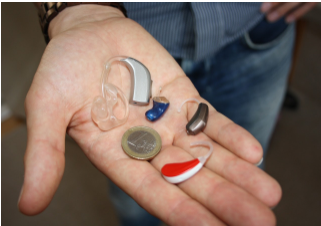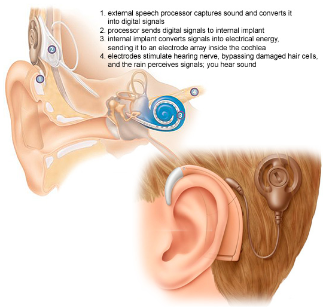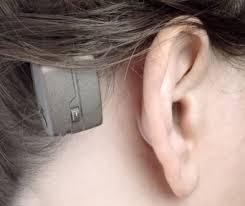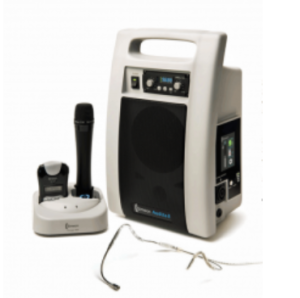Care of Hearing Aids, Cochlear Implants and FM Systems
Hearing aids, cochlear implants and FM systems should be kept clean, dry, and away from heat sources. They should be worn during all waking hours, but care must be taken not to drop them on hard surfaces during handling or cleaning.
Over time, your child will learn to independently manage their amplification needs. If they are younger or when they first receives their new hearing technology, your child may require additional support.
It is important that the batteries in your child’s hearing aids or cochlear implants are checked regularly and that extra batteries are sent to school, just in case.
At home, practice with your child by having them change the batteries in their listening devices’ and assist in putting on their listening devices every day so they become more comfortable and independent in doing so. Remember, they eventually will need to be able to do this when you are not there with them at school.
Daily Care for the Hearing Aid
Your child’s hearing aids will last longer and work better if they are taken care of. Your audiologist can help you learn what you need to do.
Hearing aids need special care to work correctly. Your audiologist will show you how to check your aids and take care of them. Ask how you can get these tools:
A listening tube
A battery tester
A forced air blower
A drying container
Do listening checks. Listen to your child’s hearing aids every day. You can use a listening tube to make sure they sound clear. You want to make sure that there are no breaks in the sounds. You should listen for feedback, or a whistling sound, inside the aids.
Check the batteries. Batteries should up to 1 week. Check the batteries using a battery tester. You child will hear the best when their batteries are at full strength. Always keep spare batteries with your child. Store them in a cool, dry place. Batteries are toxic, so handle them carefully. Be sure to get rid of them properly.
Clean your child’s hearing aids often. Use a soft, dry cloth. Check for dirt and grime. Remove your child’s earmolds from the hearing aids to clean them with mild soap. Dry them carefully using a forced air blower. Do not use a hair dryer! This is too strong and can damage the aids. Be sure they are dry, then put them back on your hearing aids.
Keep your child’s hearing aids dry. Your child’s hearing aids will work best when they are dry. Use a drying container to keep moisture from building up inside the aids. Take the batteries out before putting your aids in the containers.
Avoid feedback. Feedback is the whistling sound that your child will hear from the hearing aid. It happens when sound comes out of the earmold and goes back into the microphone. Your child should not hear feedback if his or her hearing aid fit well. Reasons for feedback could include small earmolds or earwax in the ear canal.
Talk to your audiologist about what to do when you start hearing feedback. Turning the volume down on the hearing aid will cut down on feedback. But, your child will then have trouble hearing other sounds.
See your audiologist. You should have your child’s hearing checked on a regular basis. Your audiologist can check your hearing aid and fix any problems.
At home, it is also important to perform a daily listening check, to become familiar with what the aid(s) should sound like to recognize a problem quickly if one should happen and troubleshoot your child’s listening device. If there is a problem with their hearing technology, contact your child’s audiologist as soon as possible.
The Daily Listening Check
At home, it is also important to perform a daily listening check, to become familiar with what the aid(s) should sound like to recognize a problem quickly if one should happen and troubleshoot your child’s listening device. If there is a problem with their hearing technology, contact your child’s audiologist as soon as possible.
Listening Check for Hearing Aids and FM/RM Systems




